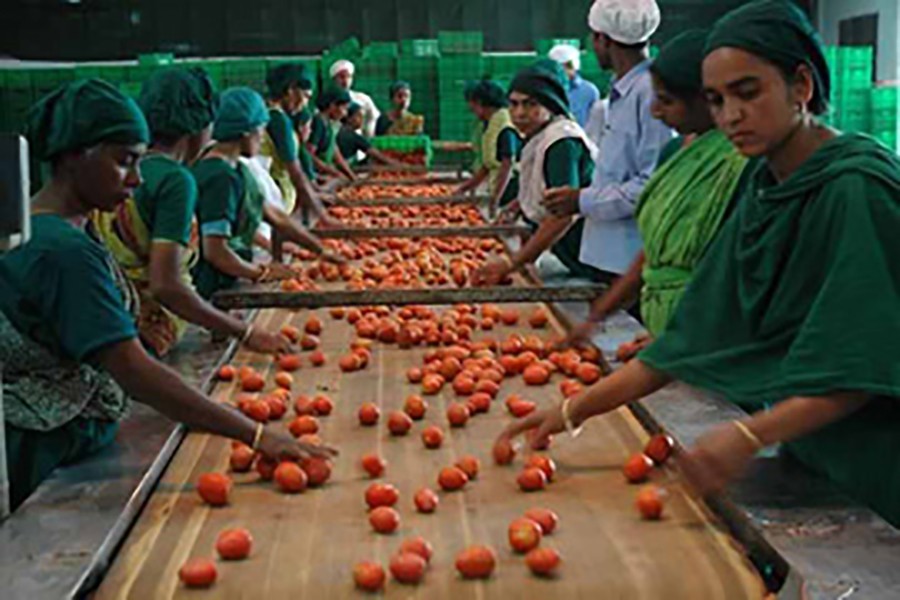Many people who are genuinely concerned about the country's narrow export base might find the projection about agro-processing highly reassuring. A recent USAID report said the agro-processing exports are set to fetch US$1.0 billion this fiscal year (FY2019-20). The report highlighted the contributions that agro-processing has been making to the economy and saw its great potential to become a major export earner and provider of jobs to a large number of people --- the sector is currently employing as many as 0.3 million people and nearly 23 per cent of them are women.
On the back of support extended by the government in the form of subsidies --- the sector receives subsidies at the highest rate of 20 per cent -- the agro-processing export growth has been highly impressive. According to the USAID report, the annual growth that averaged over 44 per cent during the past five years was phenomenal. Besides, the market size of agro-processing, in term of domestic sales and export value, is about to reach US$5.0 billion.
However, the report has made it a point that the sector could do even better had it not encountered a few problems such as low investment and lack of region-centric growth. The lack of involvement in exports by the majority of agro-processing firms remains a hurdle. Reportedly, there are more than 400 such firms, but a few of them are export-oriented. Moreover, one single firm has nearly two-thirds share in the sector's total annual export revenue earnings. Many others are staying away from venturing into exports for they do not have necessary fiscal support.
More importantly, most of the agro-processing firms are located in the country's northern part. Thus, the export potential of agro-products of other regions goes untapped and farmers are deprived of better prices. The policymakers, in all fairness, should not allow this kind of skewed development and make necessary policy changes to strike a balance as far as the growth of agro-processing industry is concerned.
Despite recording an impressive growth score, the agro-processing sector does have certain limitations. The first and foremost among those is the absence of a quality control mechanism, an issue that receives the top-most importance from both domestic buyers and importers. And the second major problem the sector faces is its great dependency on imported packaging materials.
The problems mentioned above are not insurmountable. As far as quality control is concerned, the government should impart training to the relevant people in the sector on the best practices of quality control and establish quality control laboratories both centrally and regionally. It should also encourage development of backward linkage industries to help add more value, in terms of local components, to agro-processing exports.
The agro-processing has a few advantages; it is not that capital intensive and it has great potential to expand, provided quality of agro-products is strictly ensured. When the businesses as well as policymakers are groping in darkness to expand the country's export basket, the agro-processing could prove a handy one to help reduce their worries. In addition to continuing the current rate of subsidy, the government should also extend a few more incentives to the sector and help it grow at a fast pace.


